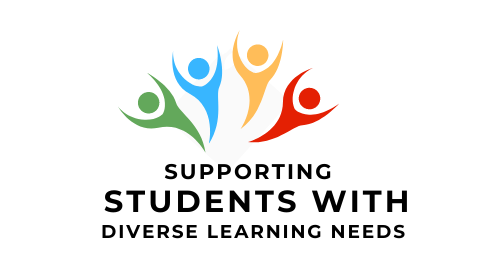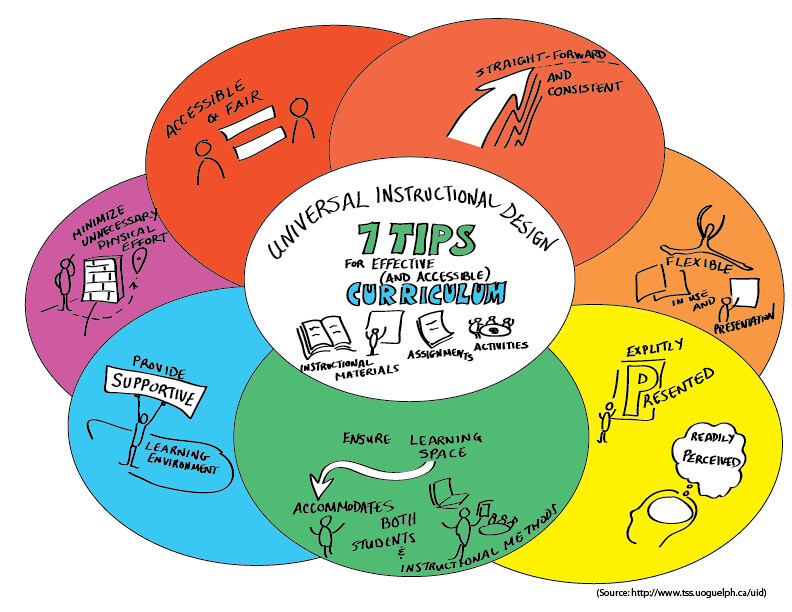3 Principles for Implementing UDL
Developed by the Centre for Applied Science and Technology (CAST) (Content summarized from Rose, 2006)
Principle 1: Multiple Means of Representation
This principle puts forward that no single means of representing knowledge or single mode for transferring that knowledge will work for all students. As a result, presenting course content using more than one approach can be very helpful to all students.
Considerations
- Consider how students access information in your course and whether they are able to use this information effectively to learn.
- Consider teaching practices in the course; are these practices effective and fully accessible to all students?
Examples in practice
- Provide choice of two textbooks, one more graphically-based another more based on prose. Students could pick which text works best for them.
- Work to ensure that lectures are conducted in structured ways that reduce cognitive load and highlight main ideas.
- Use a multi-modal approach to presentation of information in the classroom: visual, auditory, and applied.
Principle 2: Multiple Means of Expression
This principle puts forward that no single means of supporting student expression and assessment of knowledge will work for all students. Once again, providing alternatives can be beneficial to all students.
Considerations
- Consider providing students with options for demonstrating their knowledge and understanding of course content.
- Consider providing a range of alternative tools or ways to support student learning in your class.
Examples in Practice
- Provide a range of options for discussion groups to support learning, both in terms of content (e.g., focused on review or advanced to extend knowledge), and by venue (e.g., either in-person or online). Students can choose whether these opportunities would be helpful to them and, if so, which they wish to participate in.
- Provide options for assessment, such as in-class, timed tests or take-home assignments. Both options assess the required outcomes, however, students can choose the approach that best suits their abilities.
Principle 3: Multiple Means of Engagement
- Students can be very different in the ways they are engaged or motivated to learn.
- Some students are highly engaged by spontaneity and novelty (e.g., students with ADD/ADHD). Other students are disengaged or even frightened by those aspects in a learning environment (e.g., students with Autism Spectrum Disorder).
- Some students are engaged by risk and challenge. Other students seek safety and support.
- Some students are attracted to dynamic social forms of learning, others shy away and recede from social forms.
There is no one way of engaging students that will work best for all(Rose, 2006).”
Considerations
- Consider providing several ways for students to apply what they are learning.
- Take into account that students can have very different emotional and attitudinal backgrounds and dispositions around learning,
Examples in practice
- Provide different approaches to class discussions, for example, both online and in person.
- Provide different options for students to interact with instructors regarding their progress and learning (e.g., office hours, setting specific meeting time, or email).


